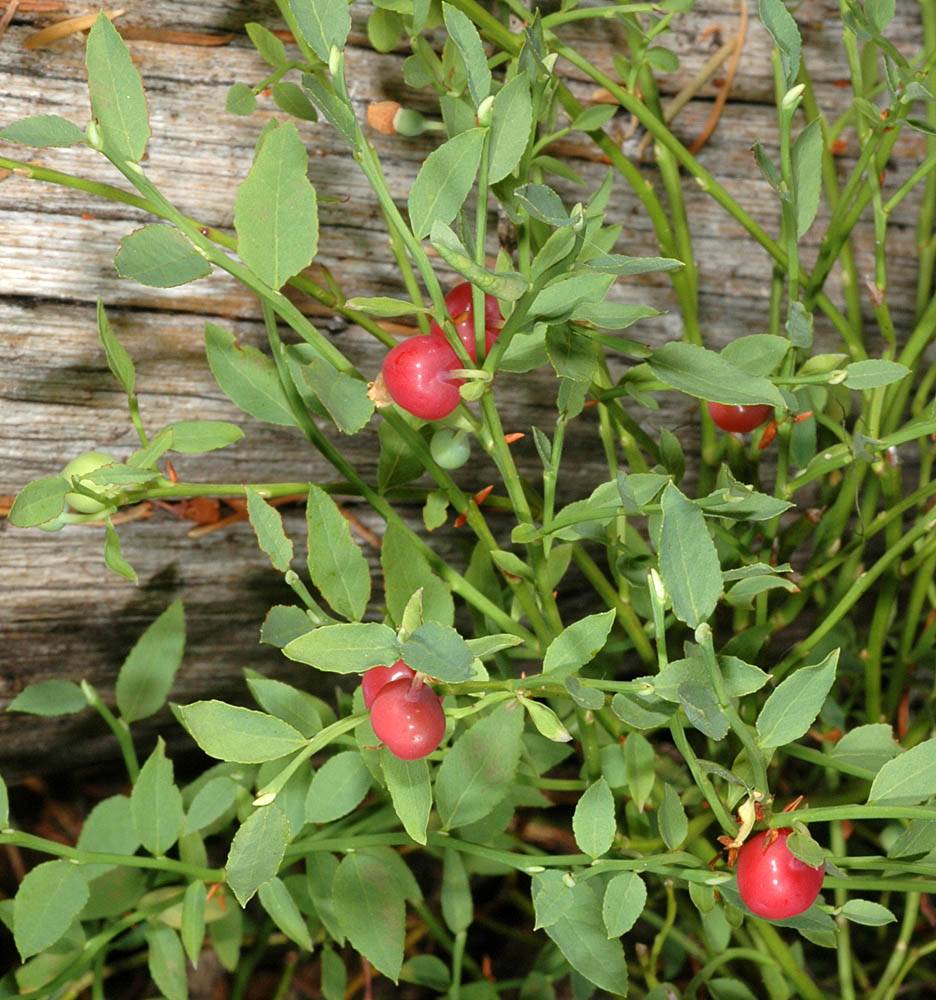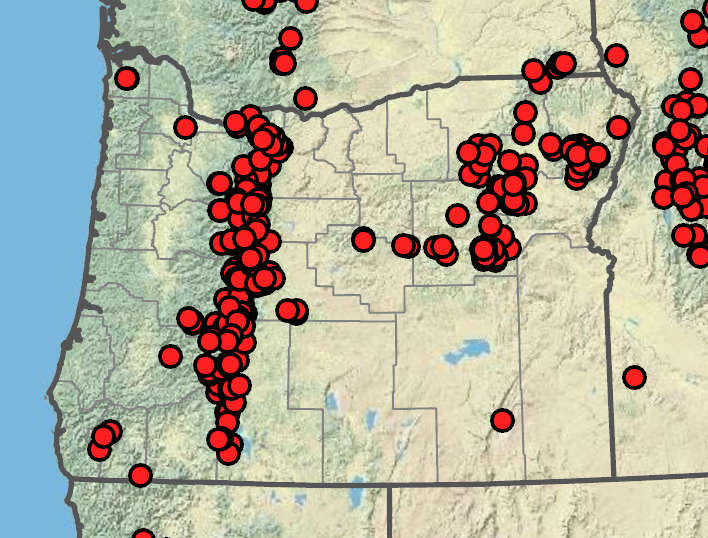Vaccinium scoparium
Vaccinium oxycoccos
grouseberry, grouse whortleberry
bog cranberry, small cranberry, swamp cranberry, wild cranberry
elliptic to ovate-lanceolate, 7–15 × 4–14 mm, light green abaxially, green adaxially; thin; flexible;
margins finely serrate from tips to near base, prominently veined;
tips acute;
surfaces abaxially often glandular, adaxially glabrous.
ovate to elliptic, 3–10 × 1–5 mm, strongly glaucous abaxially, green to dark green adaxially; stiff;
margins entire;
tips rounded to subacute;
surfaces abaxially glaucous, adaxially glabrous.
solitary flowers in axils.
solitary flowers in axils;
bracts < 1 mm wide.
sepals 5;
calyces very shallowly lobed, glabrous;
petals 5;
corollas urceolate to globose, 3–4 × 3–5 mm, pink, glaucous;
filaments glabrous.
sepals 4;
calyx lobes shallow, deltate, red, glaucous;
petals 4;
corollas 4.5–7.5 mm; whitish pink to pink, glabrous;
lobes deeply parted and reflexed;
filaments 50% as long as anthers, pubescent.
3–6 mm in diameter, bright red to bluish purple; without a bloom.
4–10 mm in diameter, dark red to bluish black, with a bloom.
evergreen, 1–5 dm;
twigs slender; round in cross section to angled, red to brown, puberulent or sometimes glabrous, often peeling, not rhizomatous.
=24.
=24, 48, 72.
Vaccinium scoparium
Vaccinium oxycoccos
Subalpine and alpine meadows, slopes and pine forests. Flowering May–Aug. 1000–2700 m. BR, BW, Casc, CR, ECas, Sisk. CA, ID, NV, WA; northeast to Alberta, east to SD, southeast to NM. Native.
See also V. myrtillus.
Wet mid- to higher elevation bogs and wetlands, often in sphagnum, occasionally coastal. Flowering Apr–Jul. 0–1400 m. Casc, Est. CA, ID, WA; north to AK, east across Canada to northeastern states; circumboreal. Native.
The vine-like habit and tiny reflexed flowers of V. oxycoccos readily distinguish it from all other Oregon Vaccinium species, with the exception of escaped populations of cultivated cranberry (V. macrocarpon). The latter, however, has larger leaves, flowers, and fruits as well as lighter-colored leaves.
Stephen Meyers
Stephen Meyers
- Local floras:
BC,
CA,
OR,
WA
- Local Web sites:
CalFlora,
CalPhotos,
Flora NW,
PNW Herbaria,
Turner Photog.
WildflowerSearch
iNaturalist (observations)
USDA Plants Database
- LBJ Wildflower Center
- SEINet
- Plants of the World Online
- Encyclopedia of Life
- Wikipedia
- Google Image Search





